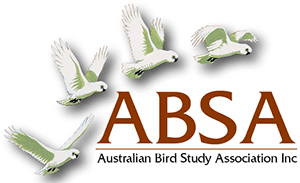DIET, OCCUPANCY AND BREEDING PERFORMANCE OF WEDGE-TAILED EAGLES Aquila audax NEAR CANBERRA, AUSTRALIA 2OO2-2OO3: FOUR DECADES AFTER LEOPOLD AND WOLFE
| Posted: |
11/04/2021 |
| Author(s): |
A. B. Rose, Esteban J. Fuentes, Jerry Olsen |
W€ compared the diet and breeding performance of Wedge-tailed Eagles Aquila audax near Canberra in 2002-2003 with that
found in the same area in 1964 by Leopold and Wolfe (1970). We located a total of 44 active territories, and checked 26 of the
32 territories originally found by Leopold and Wolfe. Twenty-two (85%) of the 26 were still occupied after nearly four decades.
Contrary to what was found in the 1964 survey, nine active nests were located inside the city limits, with an average distance to
paved roads of 720 ± 132 metres (range 130-1 270 m) and to suburbs of 1 117 ±251 metres (range 260-2 000 m). Four nests
were less than 500 metres from houses, but only one territory was completely surrounded by urban areas.
Fledgling rates were greater in 2002-03 than in 1964 (l .1 versus 0.8 young per territory) mainly because more pairs fledged
two young in the 2002-2003 survey, and there was a decrease in the number of pairs lhat fledged no young. In 2002-2003, 492
prey items were recorded from 33 territories. Fifty-seven different species were found: 19 mammals, 20 birds, seven reptiles
and one crustacean. Mammals and birds were the dominant groups by number, 54.7 and 41.9 percent respectively, and
mammals dominated by biomass (95.3%). The breeding dist in 2002-2003 was dominated by macropods, representing 19.9
percent (n = 98) of the total items and 45.6 percent of biomass. The most important species among these macropods was the
Eastern Grey Kangaroo (13.6 and 31.2% by number and biomass respectively). Other important items were the European
Rabbit (16.9 and 9.5% by number and biomass) and adult sheep (3.3 and 19.7%). Among birds, the parrots and cockatoos,
Order Psittaciformes, represented 12.8 percent of the total items, but their contribution to the biomass was negligible (1.1%).
The Galah (5.1%, n = 25) and Australian Magpie (6.1%, n = 30) were the most important bird prey species.
The proportional contribution of the different prey categories was significantly different between the two time periods. Three
groups decreased significantly: European Rabbit (43.8% in 1964 v 16.9% in 2002-2003), Hare (15.8 v 7.9%) and lamb (8.9 v
1.8%); and three others showed significant increases: macropods (1.9 v 19.%:), parrots (3.5 v 10.9%) and Other Birds (4.6 v
17%).
As long as the current high levels of diverse prey are available for the eagles near Canberra, it is likely that the population will
remain stable, and young fledged per territory will remain high.
>> Download Abstract |
File Size: 107KB
>> Download Complete PDF | File Size: 3MB
